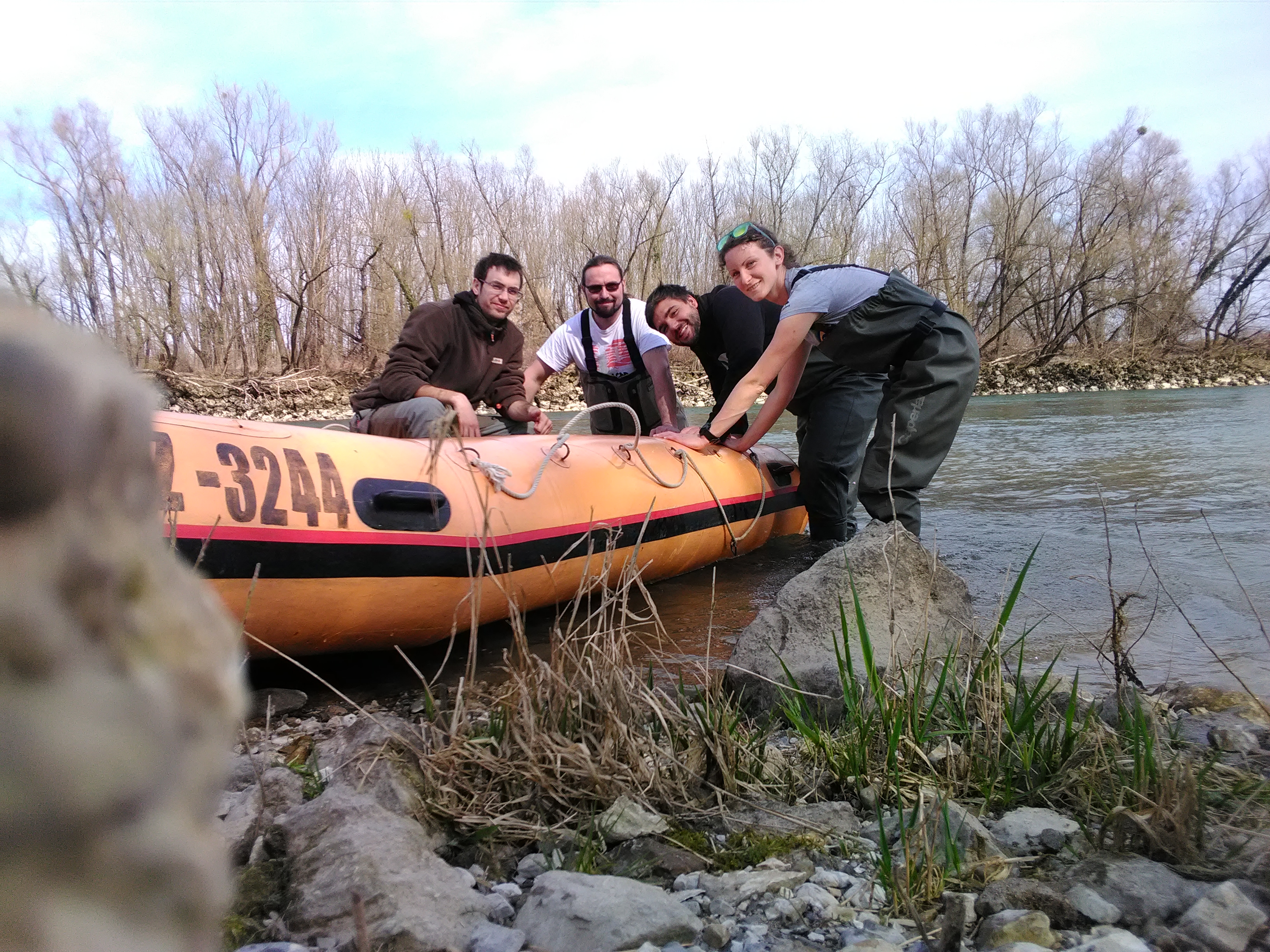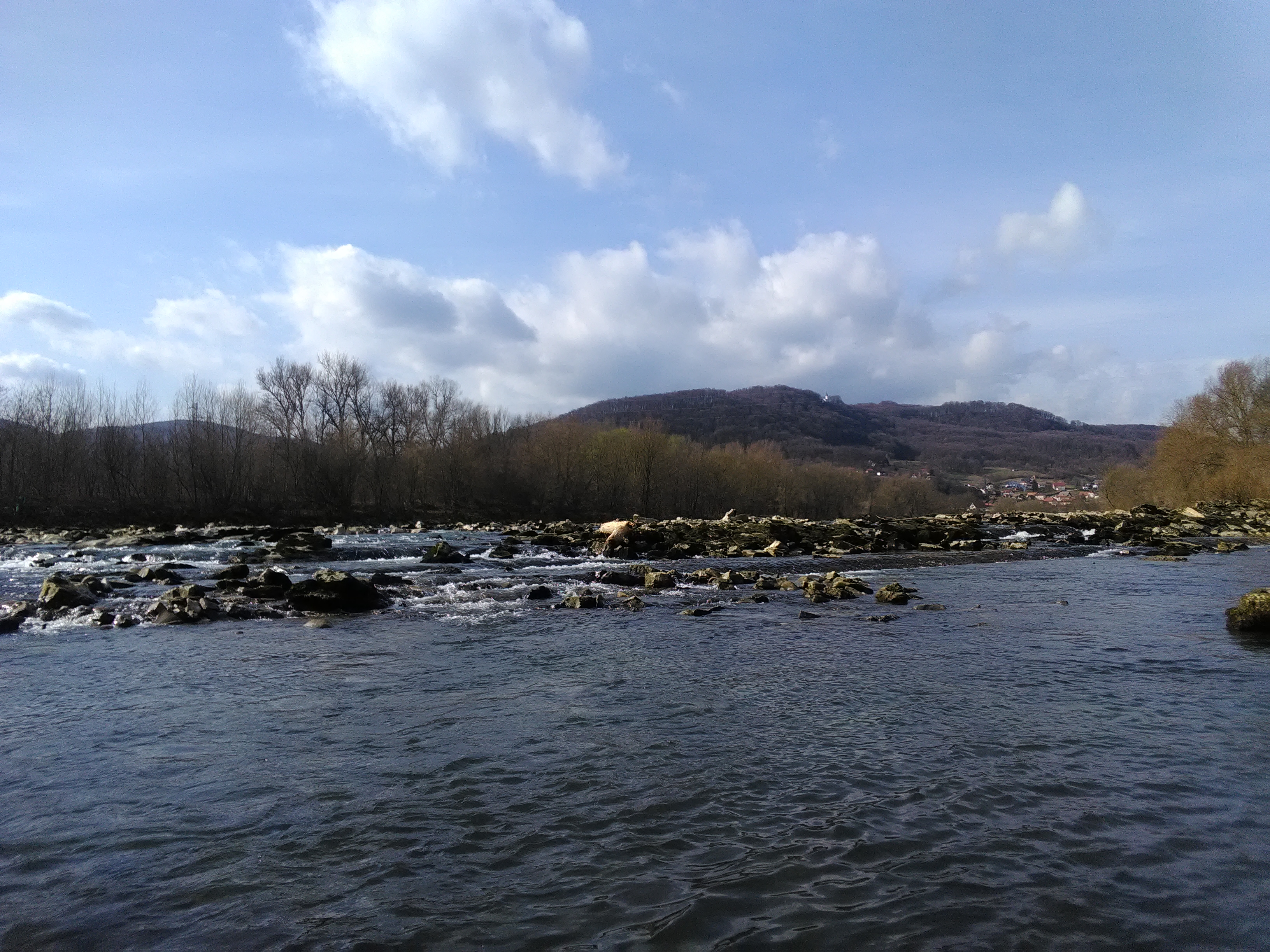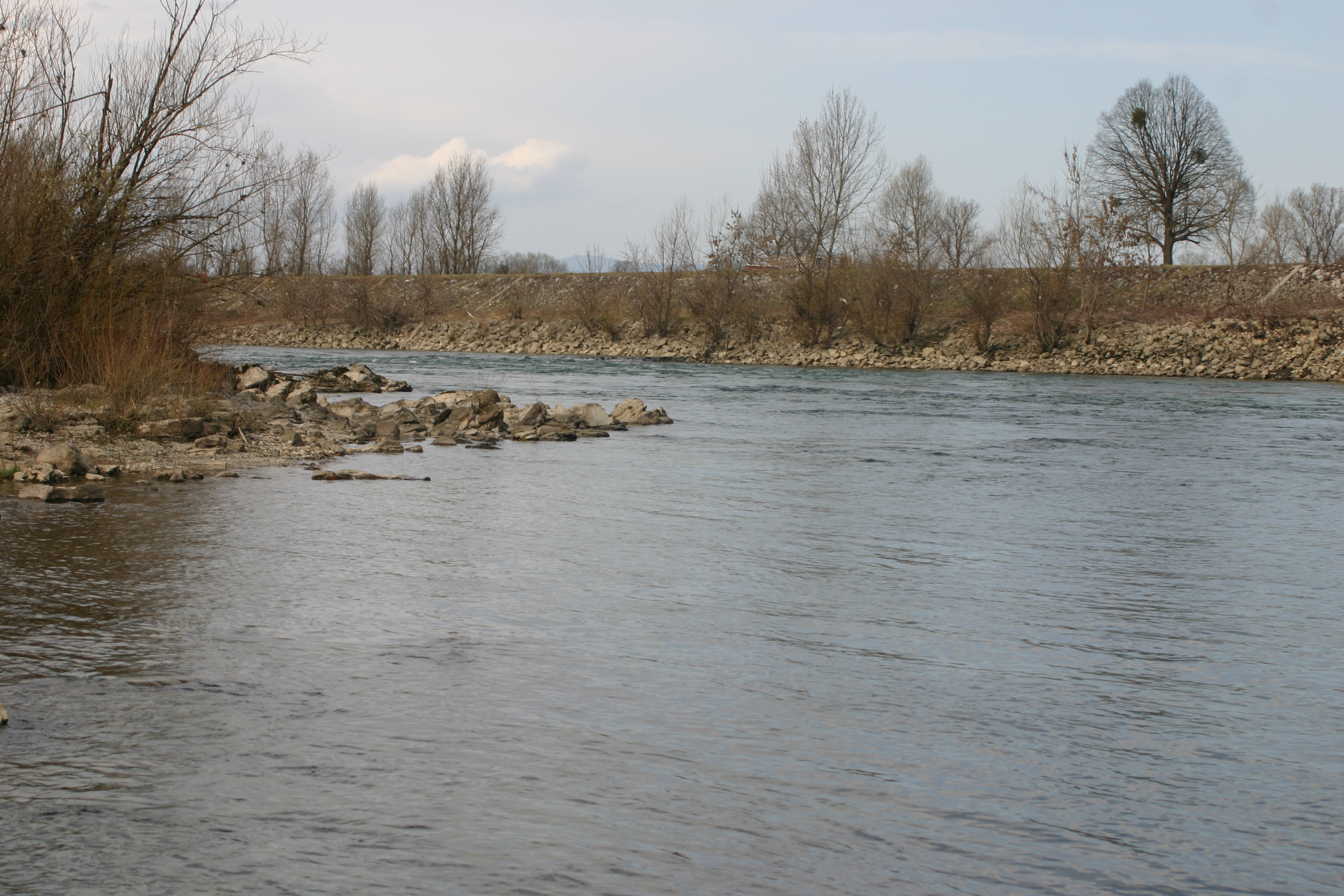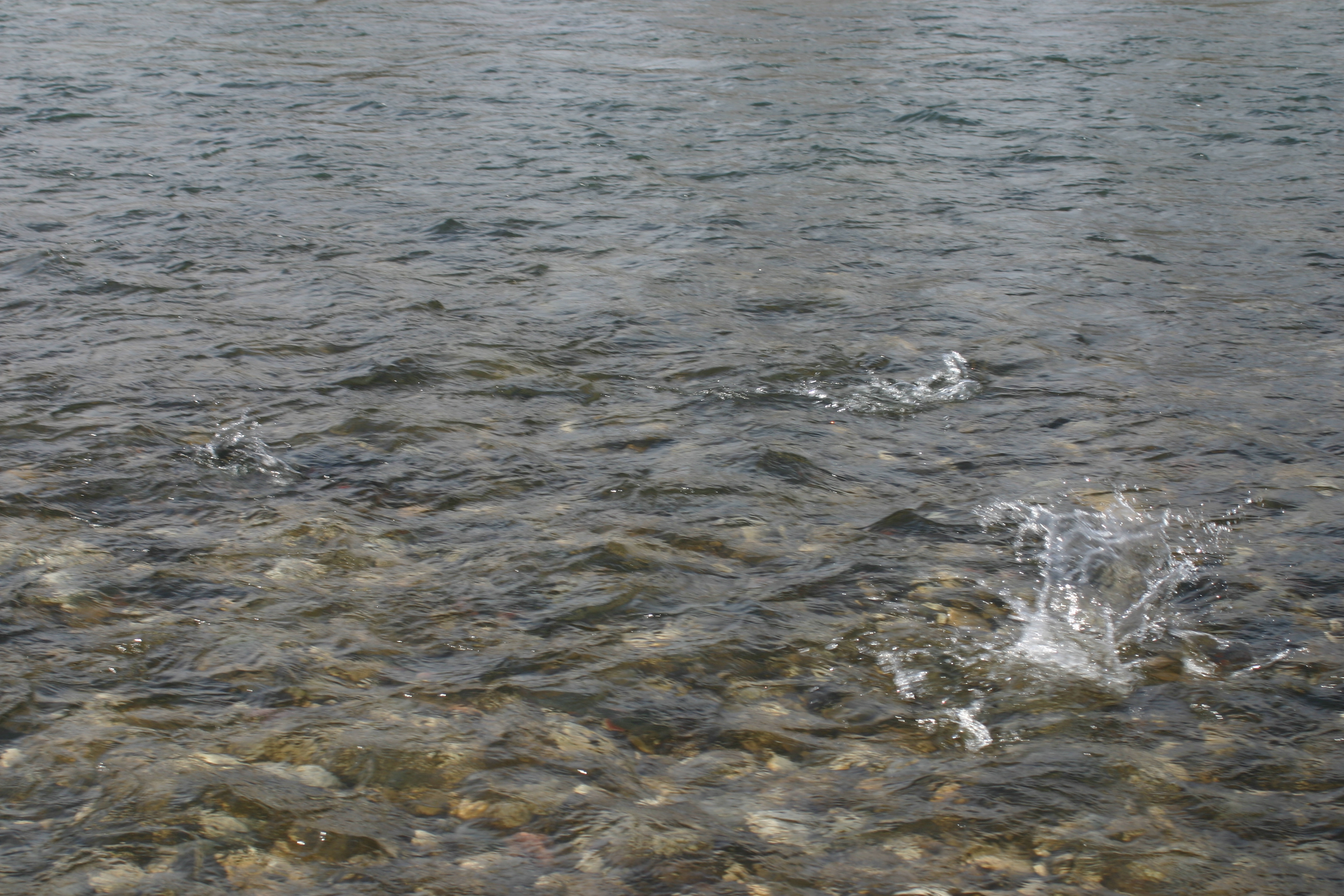MEASURES - Field survey of potential wintering habitats on Sava river
21-03-2019
In the beginning of March a team of 2 members from Institute REVIVO and 2 from Karlovac University (VUKA) gathered in the cold morning hours of early March to perform wintering habitat mapping for sterlet (Acipenser ruthenus), nase (Chondrostoma nasus), barbel (Barbus barbus), vimba (Vimba vimba) and cactus roach (Rutilus virgo) on the Lower Sava River in Slovenia.

VUKA and REVIVO team after the field work
Sava River is formed by the Sava Dolinka and Sava Bohinjka headwaters both originating in Slovenia. After crossing Slovenia, it flows into Croatia near Karlovac and continues towards the norther border of Bosnia and Herzegovina, finally discharging into the Danube in Belgrade, Serbia. It's total length of 990 km and 97,71 km2 catchment size makes it the greatest tributary of the Danube by volume of water.

Renaturation measures in Lower Sava river in Slovenia
The joint survey of the Mura River with our colleagues from VUKA in February ensured that the field work was running smoothly and no words were needed to determine what has to be done and who has to do it.

Natural barrier close to Brežice
Our survey started below the hydroelectric power plant Brežice where the lack of suitable habitats for migratory fish allowed us to quickly travel down the river to reach Čatež, where we identified a number of potential wintering habitats during the map analysis. During the 60’s rush of river regulations, a set of pier like hydromorphological measures visible on the map were constructed to slow down the fast flowing channeled river. After all these years we were very curious to see what kind of habitats were created. And how pleasantly were we surprised! We found the pools up to 8,5 m deep. We scanned the depth profile, took substrate samples and determined the morphological characteristics of the whole channel to see and compare the quality of habitat at each of the chosen locations/pools.

Lower Sava River in Slovenia
During the sampling, the water temperature was 11° C and Nase (Chondrostoma nasus) were already spawning. This is the first official record of Nase spawning in March in the Lower Sava River in Slovenia, but water temperatures are exceptionally high this year and the fish follow the natural clues, so let’s hope for stable weather during the next couple of weeks, so that the eggs and larvae have the chance to successfully mature.

Nase spawning
With this survey we completed data collection campaign on the Mura and Lower Sava River in Slovenia to determine locations of the best potential wintering, nursery and spawning habitats of migratory fish. Our next step will be to choose several potential nursery habitat locations and sample them in spring to confirm their use by our target species.
